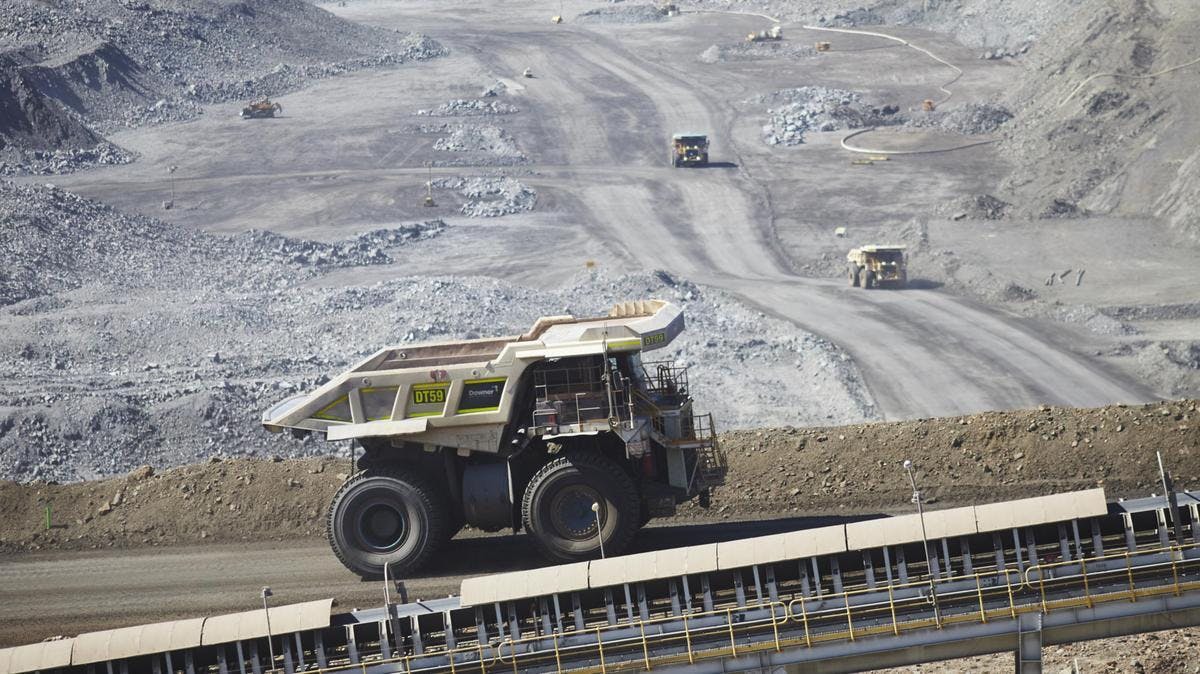The workplace deaths behind Australia’s mining riches

The mining industry’s super-profits are underpinned by deaths at work, to say nothing of the trashing of Aboriginal land rights and environmental destruction.
Twenty-five-year-old Indigenous man David Armstrong was killed on 30 September at Fortescue Metal Group’s Solomon Hub iron ore mine in the Pilbara region of Western Australia. Part of the drill and blast team, he died after the ground collapsed beneath him.
Armstrong’s brother Coen told the West Australian: “Everyone who’s been touched by Dave knows the kindness his soul shared, and we hope everyone finds solace in the fact he lived life to the fullest as we have”.
An ABC article carried a picture of a smiling Andrew Forrest, billionaire owner of Fortescue, but took it down after a backlash.
The picture was appropriate, in its own sick way. Profits bring smiles. It is hard to overstate just how much money these mines make for the bosses. Western Australia’s iron ore sales were A$97.7 billion in 2019. Iron ore is Australia’s largest export, and Australia is the number one exporter in the world.
This year, the price of iron ore has moved wildly between US$120 and $220 per tonne. It costs only US$15 per tonne to produce, as Fortescue revealed to its workers earlier this year. BHP has a train that can carry 82,000 tonnes of ore—between $9.8 and $18 million worth of crushed rock. This is what super-profits look like.
Just two weeks before David Armstrong’s death, 52-year-old scaffolder Eugene Tata fell to his death at another Pilbara site, the Sino Iron mine, 1,000 kilometres south of Karratha. The mine is run by CITIC Pacific, which bought the rights to mine from another billionaire, Clive Palmer. Disgracefully, the company did not even shut its whole operation on the day of the death.
“Sino Iron has been the subject of 51 improvement notices and twelve prohibition notices in the past six years, covering operations at the open pit, port and processing areas”, noted the West Australian. “Notices covered issues such as working at heights, plant operation, electrical and movement of vehicles.”
One CFMEU occupational health and safety officer described the safety record of the Sino Iron site to the newspaper as “outrageous”. “Conditions on mine sites have been deteriorating since 2013-14”, he said. “They know there’s no inspector on the beat so companies cut corners.”
Safety costs money. With profits like these, and with very little push-back, it’s easy to see why companies choose profits over workers’ lives.
“Someone on the ground will tell you a hundred percent it’s always about production over safety”, union organiser Jeff Carig said when I interviewed him in 2019 for my PhD research. The pressure to work fast is relentless. As one miner told me: “When they put a job up on the board you might have ... four hours on a job card to do it ... But the job actually takes probably eight hours”.
Union sites are safer sites. Where unions are of sufficient strength, workers can point out safety breaches, and insist on realistic times to complete tasks. But unions have been shut out of the Pilbara iron ore industry, in which fewer than 5 percent of workers are union members. Union-negotiated agreements are the exception.
Such is the atmosphere that those unionists who do exist can’t organise openly. Workers are also afraid of losing their jobs for raising safety concerns.
Added to this is the issue of fly-in fly-out (FIFO) worker suicides. (Most iron ore miners are FIFO workers, living in Perth or interstate.)
Companies are not required to investigate when there is a suicide in their mining camp, let alone if one of the workers or contractors takes their own life during an off swing (the week off after working two or three weeks consecutively).
Twelve-hour days, for fourteen or 21 days consecutively in a remote region, away from family and friends, takes its toll. But this is the work arrangement imposed by the mining bosses, one they refuse to change despite the evidence of its impact on mental health.
It doesn’t have to be like this. When the industry was unionised in the late 1960s and early 1970s, workers civilised an industry with wild west safety standards. All manner of safety measures, such as strict isolation lock procedures when machinery was being maintained, were opposed by bosses but won through strikes.
The ’70s and ’80s were years of union strength and militancy in the Pilbara, with strong shop steward networks, frequent strikes and union influence over staffing levels, overtime and safety. The bosses hated it.
They smashed unionism in the region throughout the ’80s and ’90s. This started with the Robe River dispute of 1986-87, when the bosses railed against “restrictive work practices”, including hard-fought-for safety standards. The strategy of the union officials against this vicious offensive was to fight through the industrial tribunal, lobby Labor governments to intervene and avoid strike action at all costs. It failed dismally.
Other companies followed suit, leading, eventually, to the sorry state of the industry today. Union strength, powered from the grassroots: that is the kind of culture we need to rebuild, for all our sakes.